
Discovering the Kalayaan Tree: A Historical Landmark in Malolos
Explore the Kalayaan Tree, a historical landmark in Malolos that symbolizes freedom and rich Filipino heritage, a must-visit for every traveler.
The Kalayaan Tree in Malolos, Bulacan, is a significant historical landmark that offers visitors a glimpse into the rich history of the Philippines. This majestic tree stands as a symbol of freedom and resilience, attracting tourists eager to connect with the nation's past.
A brief summary to Kalayaan Tree
- RRV6+5M2, Malolos, Bulacan, PH
- +639934184414
- Monday 12 am-12 am
- Tuesday 12 am-12 am
- Wednesday 12 am-12 am
- Thursday 12 am-12 am
- Friday 12 am-12 am
- Saturday 12 am-12 am
- Sunday 12 am-12 am
Local tips
- Visit early in the morning for a tranquil experience and great lighting for photos.
- Take a guided tour to gain deeper insights into the historical significance of the tree.
- Bring a picnic to enjoy in the surrounding area, making for a relaxing afternoon.
- Respect the local customs and keep the area clean to preserve its beauty for future visitors.
Getting There
-
Car
If you are driving from Manila, take the North Luzon Expressway (NLEX) and continue on to the Subic-Clark-Tarlac Expressway (SCTEX). Exit at San Fernando and follow the signs towards Malolos, Bulacan. Once in Malolos, use a GPS to navigate to the Kalayaan Tree, which is located at RRV6+5M2, Malolos, Bulacan. Be aware of possible toll fees along NLEX and SCTEX, which can range from PHP 50 to PHP 150 depending on your exit.
-
Public Transportation - Bus
From Manila, head to the Cubao Bus Terminal and take a bus bound for Malolos, Bulacan. The bus fare is approximately PHP 70 to PHP 100. Once you arrive at the Malolos Bus Terminal, you can take a local jeepney or tricycle to reach the Kalayaan Tree. It's roughly a 10-15 minute ride from the terminal. Make sure to show the driver the GPS coordinates (14.8428939, 120.8116508) or the address RRV6+5M2, Malolos, Bulacan to ensure you reach the correct location.
-
Public Transportation - Train
You can also take the Philippine National Railways (PNR) train from Manila to Malolos. The fare is around PHP 50. Once you arrive at the Malolos train station, take a tricycle or jeepney to the Kalayaan Tree. Provide the driver with the GPS coordinates (14.8428939, 120.8116508) or the address RRV6+5M2, Malolos, Bulacan to help them navigate to your destination.
Discover more about Kalayaan Tree
Iconic landmarks you can’t miss
Museo ng Kasaysayang Pampulitika ng Pilipinas - Casa Real Shrine
0.2 km
Explore the Casa Real Shrine, a historical landmark in Malolos that offers deep insights into the political history of the Philippines.

GUIGUINTO - MALOLOS Boundary Welcome Arch
5.2 km
Discover the Guiguinto - Malolos Boundary Welcome Arch, a historical landmark that showcases Bulacan's rich culture and invites travelers to explore its vibrant heritage.

Inang Filipinas Shrine
20.2 km
Explore the Inang Filipinas Shrine in Bulacan, where Filipino history and culture come alive in a serene and reflective environment.

Battle of Kakarong De Sili Site
20.2 km
Explore the historic Battle of Kakarong De Sili Site in Bulacan, a key location in the Philippine Revolution that offers a glimpse into the country's fight for freedom.

Consunji House
24.1 km
Discover the architectural beauty and rich history of Consunji House, a cultural gem in San Fernando, Pampanga, showcasing Filipino heritage at its finest.

Sitio Sapang Pari - Landing Site of Spanish Missionaries from Tondo Parish, Manila Bay
24.8 km
Explore the serene historical landmark of Sitio Sapang Pari in Pampanga, where Spanish missionary heritage meets the tranquil beauty of the Philippines.
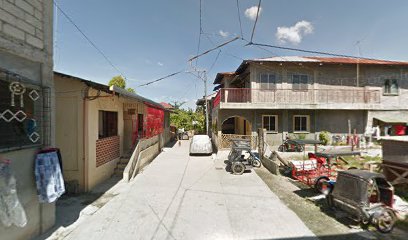
Chinese Cemetery South Gate
30.2 km
Discover the serene beauty and rich cultural heritage of the Chinese Cemetery South Gate in Manila, a peaceful reflection of Filipino-Chinese history.
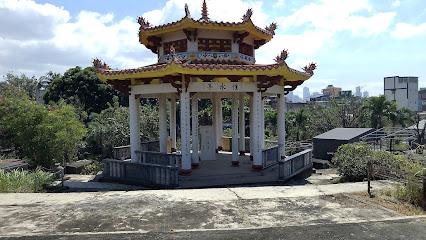
Pink House
31.4 km
Discover the charm of San Fernando's Pink House, a historical landmark brimming with cultural heritage and stunning architecture.

Balumpare Arch
31.4 km
Explore the historic significance and cultural richness of Balumpare Arch in Sampaloc, Manila, a must-visit landmark for every tourist.
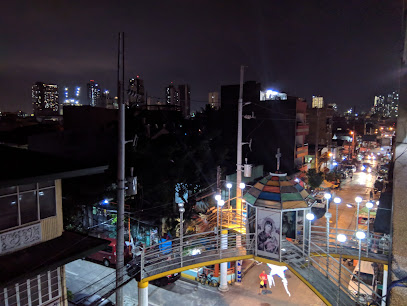
Kataastaasan Kagalanggalang na Katipunan Ng Mga Anak Ng Bayan Monument and Historical Marker
31.5 km
Discover the Kataastaasan Kagalanggalang na Katipunan Ng Mga Anak Ng Bayan Monument, a historical landmark celebrating the Philippines' fight for independence in Manila's Binondo.
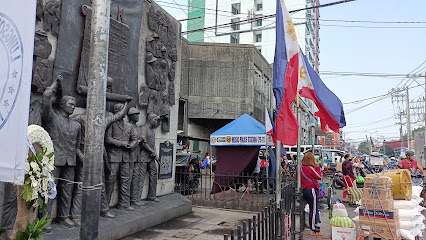
CALUCUT BRIDGE
31.9 km
Explore Calucut Bridge, a historical landmark in San Fernando, Pampanga, showcasing stunning architecture and rich cultural heritage amidst picturesque surroundings.

The Manila Grand Opera House Historical Marker
32.1 km
Explore the Manila Grand Opera House, a historical landmark showcasing the rich cultural heritage and artistic spirit of the Philippines in the heart of Santa Cruz.

Filipino-Chinese WWII Martyrs Memorial
32.1 km
Discover the Filipino-Chinese WWII Martyrs Memorial in Binondo, a poignant tribute to resilience and cultural heritage in Manila's historic district.
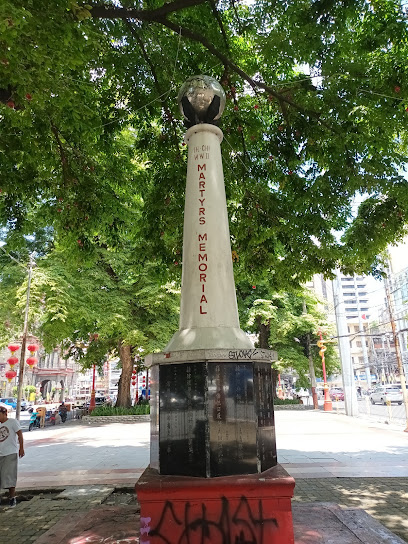
Doña Teodora Alonzo Death Place Historical Marker
32.2 km
Explore the Doña Teodora Alonzo Death Place Historical Marker in Binondo, Manila, and connect with the rich cultural heritage of the Philippines.
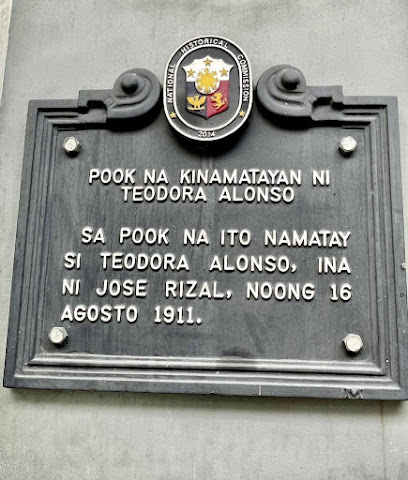
Church of Binondo Historical Marker
32.2 km
Explore the Church of Binondo Historical Marker, a captivating blend of culture and history in Manila's vibrant Binondo district.
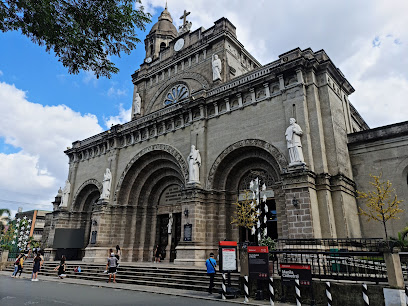
Unmissable attractions to see
St. James the Apostle Parish
2.7 km
Experience the tranquility and rich heritage of St. James the Apostle Parish in Paombong, Bulacan - a serene oasis for spiritual and cultural exploration.

Saint James the Apostle Parish Church - Poblacion, Plaridel, Bulacan (Diocese of Malolos)
7.0 km
Explore the exquisite Baroque architecture and rich heritage of the Saint James the Apostle Parish Church in Plaridel, Bulacan.

Pulilan Butterfly Haven
7.6 km
Explore the captivating world of butterflies at Pulilan Butterfly Haven, a tranquil sanctuary in Bulacan, perfect for nature lovers and families.

Diocesan Shrine and Parish of St. Augustine
15.7 km
Discover the spiritual and architectural beauty of the Diocesan Shrine and Parish of St. Augustine, a must-visit destination in Baliwag, Bulacan.
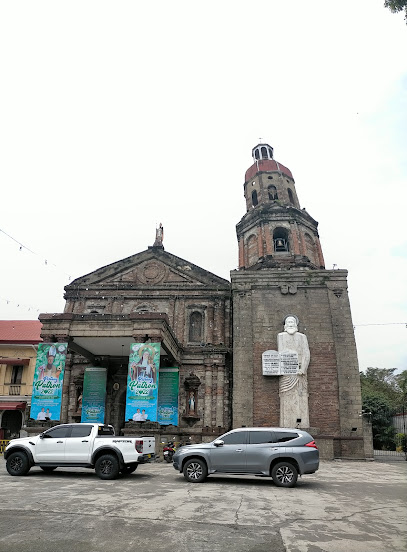
DAMPALIT MEGADIKE
21.5 km
Experience the natural beauty and peaceful ambiance of Dampalit Megadike, a must-visit tourist attraction in Malabon, Metro Manila.

San Luis Park
22.3 km
Explore the tranquil beauty of San Luis Park in Pampanga, where lush landscapes and diverse wildlife create a perfect escape into nature.

Betis Galleria
22.5 km
Experience the artistic soul of Pampanga at Betis Galleria, a vibrant museum celebrating local culture and craftsmanship.
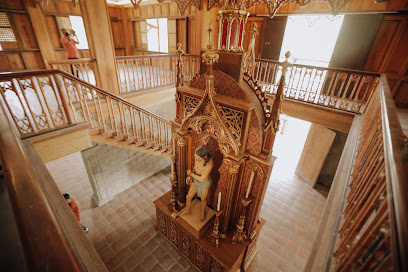
St. Clare Monastery
22.9 km
Experience tranquility and spiritual reflection at St. Clare Monastery, a serene sanctuary in Pampanga, ideal for contemplative travelers.

Lubao Bamboo Hub & Eco-Park
23.4 km
Explore the lush landscapes and eco-friendly wonders of Lubao Bamboo Hub & Eco-Park, a must-visit destination in Pampanga for nature lovers.
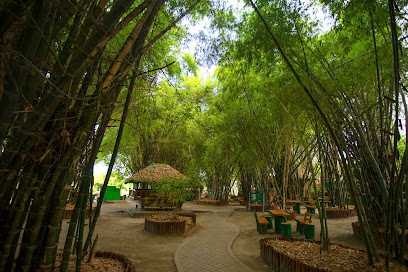
Parroquia de la Inmaculada Concepcion de Guagua - Plaza Burgos, Guagua, Pampanga (Archdiocese of San Fernando)
23.4 km
Explore the Parroquia de la Inmaculada Concepcion de Guagua, a serene Catholic church in Pampanga, rich in history and cultural heritage.
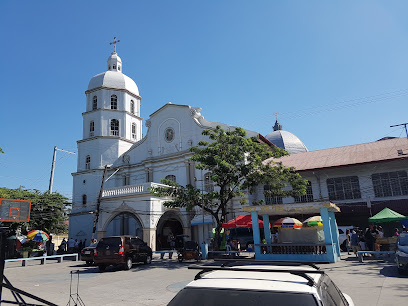
Betis Church (Santiago Apostol Parish)
23.4 km
Explore the architectural marvel of Betis Church, a serene haven of faith and artistry in Guagua, Pampanga.
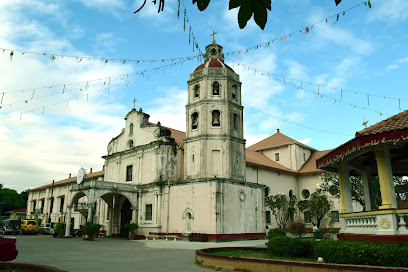
Tomas Edison Olalia's Sanctuary
23.5 km
Explore the serene landscapes of Tomas Edison Olalia's Sanctuary in Bacolor, Pampanga, a perfect retreat for nature lovers and peace seekers.
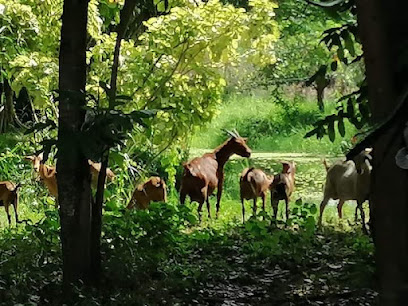
Lot-Gar Farm Resort
23.5 km
Discover the enchanting Lot-Gar Farm Resort in Pampanga - a serene escape that blends relaxation with adventure amidst stunning natural beauty.
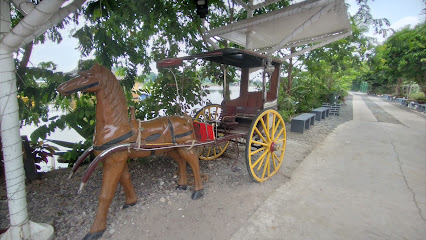
Valenzuela City People's Park
23.9 km
Discover the tranquil beauty of Valenzuela City People's Park, a lush urban oasis in Metro Manila perfect for relaxation and cultural exploration.
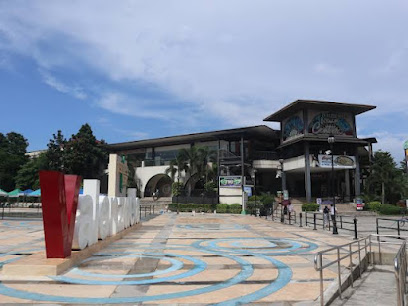
Lazatin House
24.1 km
Explore Lazatin House, a historical landmark in San Fernando, Pampanga, and immerse yourself in the rich cultural heritage of the Philippines.
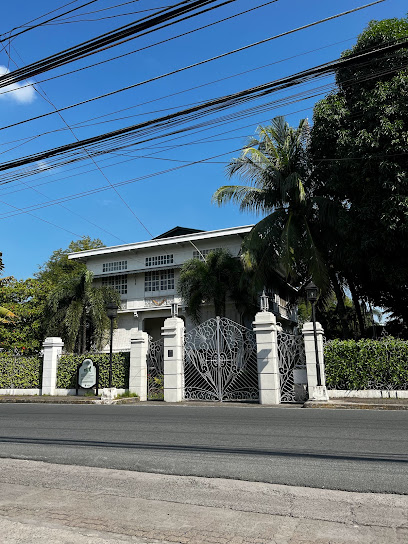
Essential places to dine
Dish n That San Fernando Pampanga
26.4 km
Discover the unique flavors of Dish n That in San Fernando Pampanga - A culinary gem blending traditional Filipino cuisine with modern flair.

Lola Ima Pampanga Cuisine
30.4 km
Discover authentic Kapampangan cuisine at Lola Ima Pampanga Cuisine in San Fernando - a true culinary delight waiting to be savored.

Capampangan Island Grill and Restaurant
30.6 km
Discover authentic Filipino cuisine at Capampangan Island Grill - where tradition meets taste in every dish.

Pares Retiro
31.3 km
Discover authentic Filipino flavors at Pares Retiro, where every dish tells a story of tradition and taste in Quezon City.

Shakey's Pizza Parlor
31.5 km
Savor delicious pizzas in a family-friendly atmosphere at Shakey's Pizza Parlor in Quezon City – your go-to spot for comfort food!

Kowloon House
31.5 km
Discover authentic dim sum at Kowloon House in Quezon City—an affordable culinary gem for food lovers!

Bistro Remedios
31.6 km
Discover authentic Filipino flavors at Bistro Remedios in Quezon City – a culinary haven for tourists seeking delightful dining experiences.

Chef's Fusion
31.6 km
Discover exquisite Asian Fusion cuisine at Chef's Fusion in Quezon City - where tradition meets innovation on every plate.

Alberto's Pizza Visayas, QC
31.6 km
Discover delicious pizzas and Filipino breakfast favorites at Alberto's Pizza in Quezon City—where flavor meets affordability.

Hang Out Bistro, Visayas Ave, Q.C.
31.8 km
Discover the flavors of the Philippines at Hang Out Bistro, Quezon City's favorite family-friendly dining destination.

Glazed Unlimited Wings
31.8 km
Discover a culinary paradise at Glazed Unlimited Wings, where every bite transports you through bold flavors and savory delights in Quezon City.

Rech Bulaluhan
31.8 km
Discover the heartwarming flavors of authentic Asian cuisine at Rech Bulaluhan in Quezon City.

Papa John's Pizza - Visayas Ave.
31.8 km
Experience unique pizza flavors at Papa John's Pizza on Visayas Ave., where every bite is crafted with care and creativity.

Ka Tunying’s Visayas Ave, QC
31.9 km
Discover authentic Filipino breakfast delights at Ka Tunying's Visayas Ave - where every bite tells a story.
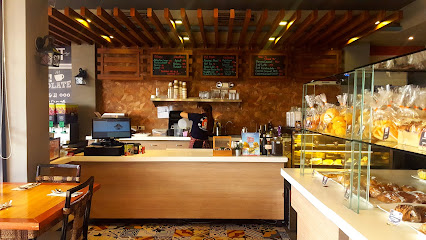
Limapulo Visayas Avenue
31.9 km
Discover the authentic taste of Malaysia at Limapulo Visayas Avenue in Quezon City – where every dish tells a story.

Markets, malls and hidden boutiques
Yunik Uneek Lingerie & Luxuries - General Merchandise - Selling For A Cause PH
6.3 km
Explore Yunik Uneek Lingerie & Luxuries: Where Fashion Meets Philanthropy in Guiguinto, Bulacan.

Whisper of Wings by MARINDUQUE BUTTERFLY SHOP
6.3 km
Discover unique butterfly-themed souvenirs and exquisite bridal accessories at Whisper of Wings in Guiguinto, Bulacan.

Calumpit Souvenir Store
9.0 km
Explore the charm of Bulacan at Calumpit Souvenir Store, where local crafts and unique keepsakes await every traveler.

Dress Up Philippines
16.5 km
Explore the latest trends and styles at Dress Up Philippines, your ultimate clothing destination in San Simon, Pampanga.

BeyaShop007 Souvenirs Shop
19.0 km
Explore the charm of the Philippines at BeyaShop007 Souvenirs Shop, where unique gifts and local craftsmanship await every tourist.

SHOPEE, LAZADA FLASH DROP OFF POINT - Willie-anne's Gift Shop
24.1 km
Discover unique local crafts and souvenirs at Willie-Anne's Gift Shop in Navotas, a vibrant hub for tourists and locals alike.

Great Value N' items
25.1 km
Explore the latest women's fashion trends at Great Value N' Items in San Jose del Monte City, Bulacan, where style meets affordability.

Robinsons Starmills Pampanga
26.0 km
Explore the ultimate shopping and dining experience at Robinsons Starmills Pampanga, where every visit is an adventure in retail therapy.

Kultura Filipino - PAMPANGA, The SM Store
26.2 km
Explore Kultura Filipino in Pampanga for authentic souvenirs showcasing the rich heritage and culture of the Philippines.

AMA Online Shop Philippines
28.0 km
Explore AMA Online Shop Philippines for unique and stylish clothing that captures the essence of local fashion in San Jose del Monte City.

Manila Giveaways Trading
29.8 km
Explore the essence of Filipino culture at Manila Giveaways Trading, where unique souvenirs and local handicrafts await every traveler.

Everything Nice Buy and Sell
30.2 km
Discover a unique shopping experience at Everything Nice Buy and Sell in Tondo, Manila, where local culture meets diverse shopping options.

Kultura Filipino - San Lazaro, The SM Store
31.1 km
Discover authentic Filipino souvenirs at Kultura Filipino in San Lazaro, a vibrant celebration of the Philippines' rich culture and heritage.

Master Shop
31.2 km
Discover unique fashion treasures at Master Shop, a vibrant clothing store in Santa Cruz, Manila, showcasing the best of Filipino style.

Lomentigar Bridal Bouique and Souvenir Collections
31.2 km
Explore the charm of Lomentigar Bridal Boutique, where exquisite bridal wear meets authentic Filipino souvenirs in the heart of Binondo, Manila.
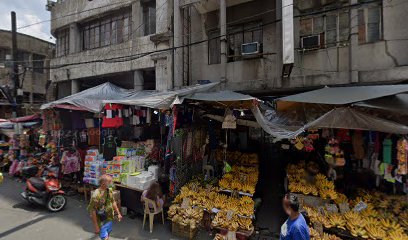
Essential bars & hidden hideouts
Stratos Resto Bar
31.0 km
Experience a vibrant nightlife at Stratos Resto Bar in Quezon City, where delicious cocktails meet stunning panoramic views.

Ko-Sing-Gaw-Lo
32.8 km
Discover the delicious grilled delights of Ko-Sing-Gaw-Lo in Intramuros, a historic gem in Manila that combines culinary excellence with rich cultural heritage.
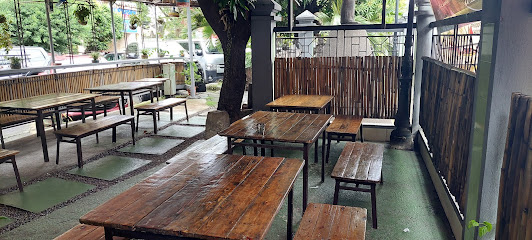
The Nautilus Bar
32.9 km
Discover The Nautilus Bar in Quezon City: a rooftop haven blending delicious cuisine with breathtaking views, perfect for a memorable night out.

Planet Shakers Mobile Cocktail Bar
32.9 km
Experience the innovative cocktail culture at Planet Shakers Mobile Cocktail Bar in Manila, where every drink promises a unique adventure.
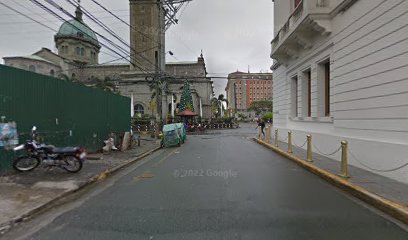
Grotto Hookah Lounge
32.9 km
Discover Grotto Hookah Lounge in Intramuros, a perfect blend of comfort, culture, and flavorful hookah experiences in Manila's historic heart.
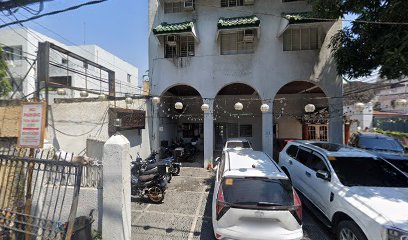
San Villa Bar and Restaurant
33.1 km
Discover the flavors of the Philippines at San Villa Bar and Restaurant in Intramuros, a perfect blend of history, culture, and culinary delight.
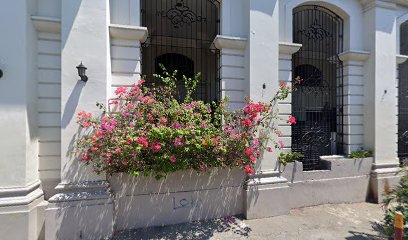
Pacific Moon Bar & Restaurant
33.1 km
Experience a delightful blend of tradition and modernity at the Pacific Moon Bar & Restaurant, where culinary excellence meets stunning views in Intramuros.

Chibz Restobar
33.2 km
Experience the vibrant flavors of Filipino cuisine at Chibz Restobar in the heart of Intramuros, Manila.

Batala Bar / Philippine Artisan Trade
33.2 km
Experience the rich flavors of the Philippines at Batala Bar, a charming café and beer hall in the historic Intramuros, Manila.
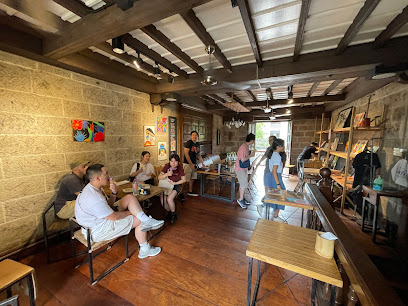
Ten Years After Bar and Restaurant
33.4 km
Discover the vibrant nightlife at Ten Years After Bar and Restaurant in Quezon City, a perfect blend of delicious food and refreshing drinks.

Tap Room
33.8 km
Experience the vibrant atmosphere of the Tap Room, a premier pub in Manila offering local brews and delicious bites in a welcoming setting.

Yok-Do Bar & Grill
34.0 km
Discover the vibrant flavors of Manila at Yok-Do Bar & Grill, where every bite is a celebration of culinary excellence.

Liquid Bar
34.0 km
Experience the vibrant nightlife at Liquid Bar, a unique pub located in Manila Ocean Park, offering refreshing drinks and lively atmosphere.

White Moon Bar
34.1 km
Discover the perfect blend of relaxation and excitement at White Moon Bar, nestled within Manila Ocean Park, offering stunning ocean views and delightful flavors.
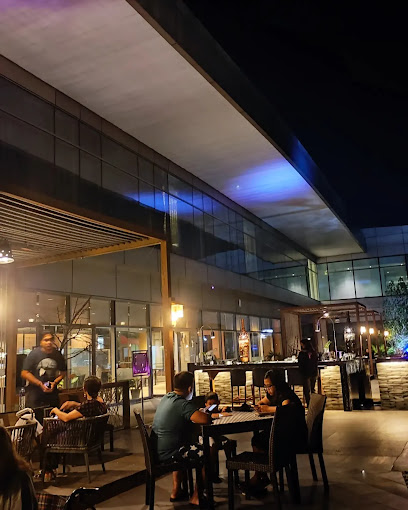
Vin55 Wine Bar & Restaurant
34.2 km
Experience the vibrant atmosphere and exquisite wines at Vin55 Wine Bar & Restaurant in the heart of Ermita, Manila.




